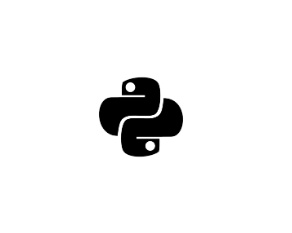Are you still searching for a programming language that is adopted globally?
Look no further!
Python is one of the highest demanded programming languages today.
However, learning python is never easy for a new technical professional. The composition and complications affiliated with OOPs in python make it quite difficult for learners.
Hence, if you are also looking forward to pursuing python throughout your professional career, you need to understand how the OOPs concept works in Python.
Do OOPs in python sound like a new concept to you?
Well, don't worry! You have come to the right place to get acquainted with this concept and to learn the details of its working.
In this article, we will discuss what are the types of OOPs in python along with their brief description.
Let's start with our concept building by laying down the foundation and understanding what OOPs are.
What are OOPs?
OOP is an abbreviation used for object-oriented programming. In the simplest way, the OOP is a method or a system through which the codes are generated by dividing the concept into objects and classes.
Oops can be used in various programming languages such as OOPs in C++, Java, and Python. However, the concepts of OOPs are well implemented using python by many professionals today.
With over 6 different categories, OOPs concepts can solve various purposes throughout the code.
Let's focus on the most frequently used OOPs concepts in Python by understanding what OOPs do in python and what are the classifications.
Types of OOPs in Python
Given that Python is an object-oriented language itself, OOPs are a generally used paradigm while dealing with the concepts. OOPs in python can be defined as a system of generating codes based on objects and classes.
Six different types of OOPs are widely used by experts in Python including;
-
Classes
Classes are the most frequently used principle of OOP. From your day-to-day life to coding problems, you must have used the term "classes" Various times.
In general, Classes stand for a collection of objects in a code. The structure of a class is kept appropriate by adding a method and an attribute to it. You can understand the term "attribute" As a parameter Or a condition.
Classes store objects belonging to a definite category to make it simpler while executing the code.
For example, you can define a class for students. In this class you will have a definite method of storing their data along with predefined parameters such as Roll no., course enrolled, year of enrollment, and other items.
-
Inheritance
Another important concept is affiliated with the OOPs. To understand this concept in detail, let's rewind the meaning of this term in your real life. Inheritance means the current or upcoming generations will acquire various assets and liabilities of their parent (preceding) generations.
In a similar manner, you will notice how the inheritance in OOPs work. In OOPs, Inheritance assures that the child object or class will hold the same properties, functions, and behavior of the parent cell without changing any significant parameter.
However, you can add other restrictions or functions to the inherited object freely.
The second class obtained by Inheritance is called the derived class Or the child class however, the first class is called the parent class or base class.
-
Object
If we ask you what do you understand by the word object? You might name a few things that you are currently surrounded by such as your keyboard, mouse, monitor, and such. Well, you are correct!
Similarly, in Python, every segment or component of the code is divided into objects. Each object stores data and will probably come with fixed attributes and methods.
In general, an object is considered to be the smallest entity of a code in Python.
-
Method
Every task requires a detailed method. In layman's language, the Method is defined as the function or the tasks assigned to any object or class.
Usually, methods are applied to classes only in different programming languages. However, in the case of Python, it is not limited to the class category. You can easily apply the concept of methods to the object category as well.
-
Polymorphism
Have you ever considered the fact that one logic or classification can be based on different parameters? For example, when we talk about amphibians. Not all amphibians can fly but some can. In such cases, you can apply the theory of polymorphism.
The term polymorphism indicates how a single task of classification can be accomplished by considering different aspects or properties of any object.
You can easily bifurcate your data even after Classifying it into some main categories using this property.
-
Data Abstraction
If you get confused between data abstraction and encapsulation, join the league of thousands of tech professionals. These terms are often considered synonymous with one another. The only reason for this is that data abstraction is obtained through the process of encapsulation.
Data abstraction is used where you wish to show only the functionalities and hide the other internal details associated with the data.
With data abstraction, you can name various tasks and classes in a form where every function of the object is indicated by its name only.
-
Encapsulation
If you wish to restrict certain access to the methods and variables inside a code, Encapsulation is the right property to utilize. While dealing with a huge volume of data, you might feel the need to restrict a few users to access a particular set of information.
You can use Encapsulation to abstract data for your analysis and use this concept to make useful applications of the selected data.
Winding up
Although you might think that the OOPs are limited to objects and classes only after studying OOPs in C++, there is a lot more to this concept.
Learn all about the OOPs in python concept regarding objects and programming components in Python. After all, Python is all about Objects and classes.


No comments yet